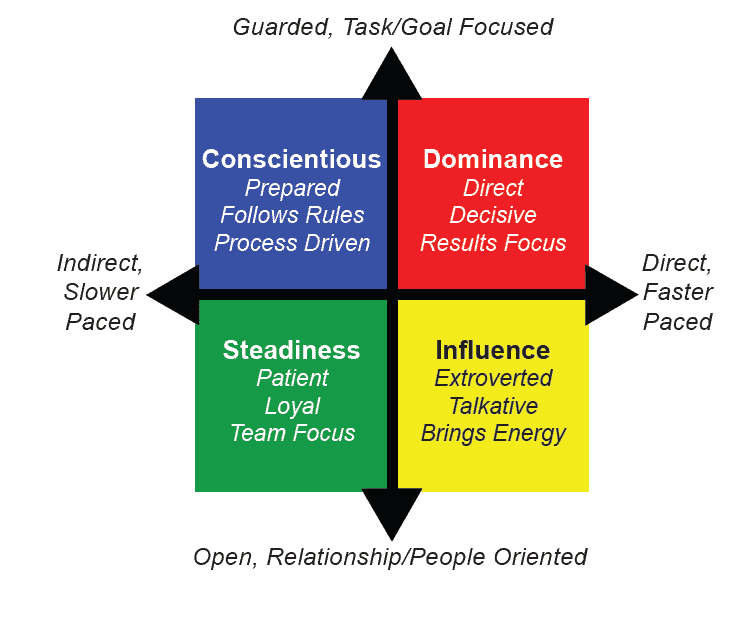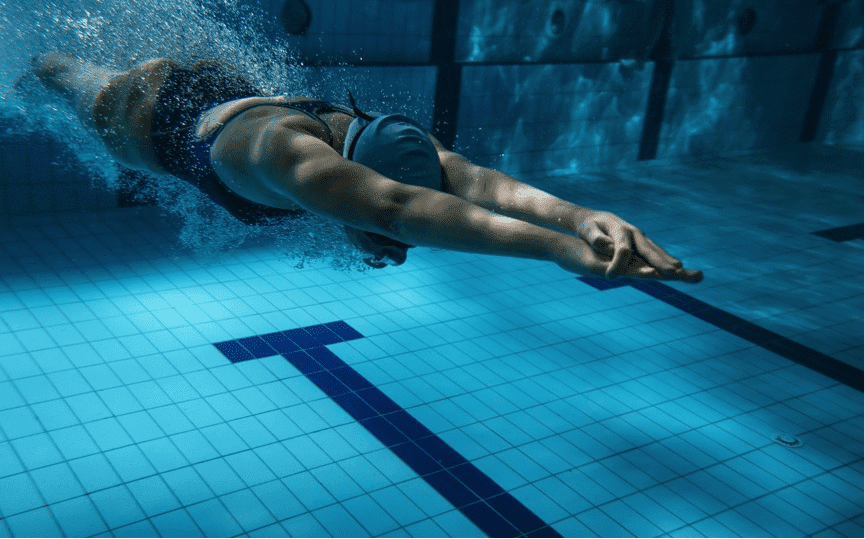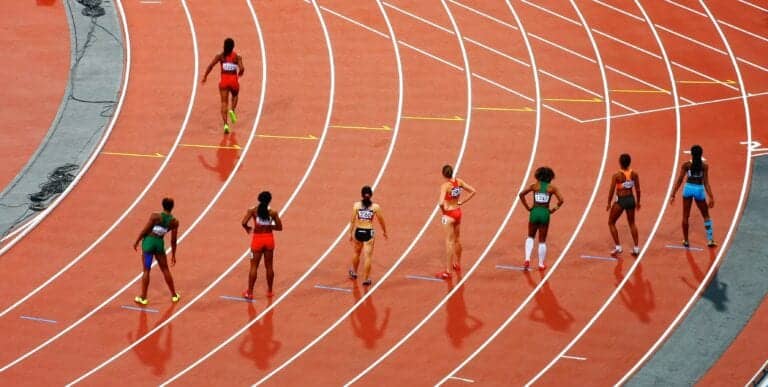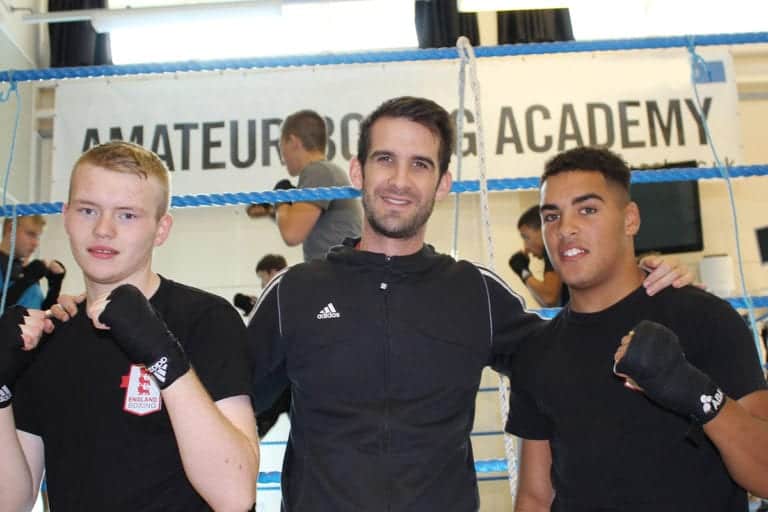Before we dive into the purpose of this article, I wanted to share an example of it in action. One of our clients was hosting a Junior Development Day for field hockey, providing excellent opportunities for emerging athletes, but importantly it also was giving coaches a chance to apply their skills in transitioning between coaching styles with the goal of improving their coaching efficacy. In preparation for the day, we worked with the coaches involved and had complete their CoachDISC profile. Through this, they became aware of their natural behavioral style, meaning the way they preferred to work with athletes including their pace, how they go about sharing their technical knowledge, build relationships, and approach problems. We also skilled everyone up with knowledge about applying the four DISC coaching styles.
I’ll share one of the coaches’ learning experiences; this particular coach was working with a small group of under 15 players in a scenario that’s pretty familiar to all of us, the drill session needed the coach to work in a directive, ‘D’ coaching style, quickly teaching three-player passing sequence to cut out a defender or goal keeper. But, under the time pressure of the game session that followed (a chance for players to apply that new skill), one of the group was just reverting back to what they knew instead of applying the drill sequence they’d just learnt. If the coach continued in a directive style with the same instructions it might have been damaging to the players confidence and self-esteem. But, there was debrief time after the game session which allowed the coach to give the player some one-on-one time. The coach asked questions so that the player had a chance to evaluate and understand why they’d done what they’d done so that when the opportunity came around next time they could do it differently. Sure, the player was learning a new technical skill, but equally the coach was also trying something new, assessing the situation and deliberately choosing a coaching style. By choosing to work more in the ‘S’ coaching style through asking questions and taking more time, what eventuated was the player went out during the next game time session and tried the sequence. At this moment, the coach then immediately adapted into the ‘I’ coaching style, encouraging and praising the player for trying it. Both the coach and the player were encouraged by the result, developing a new base to build technical proficiency on.
Switching between coaching styles gives you the ability to positively impact your athletes’ performance. Understanding how and when to lead with particular elements of your natural style is simpler when you understand your preferred behaviors and the matrix of the DISC styles. It’s not easy, but almost always, when coaches center their behaviors on the athlete’s needs, in the right time and place, it creates a great coach-athlete relationship. This in turn makes the athlete feel valued, unique and important.
Understanding Your Natural Coaching Style
All sport coaches have a preferred way they like to coach – their “coaching style”, it is essentially the way they naturally behave when they are coaching. When we refer to natural behavior we are referring to the behavior likely to emerge when a coach is not consciously thinking about their approach, but is instead, just doing what they have always done. It is similar to an athlete being on autopilot. Just doing, not thinking.
Sometimes this coaching style works well with one athlete and poorly with another or works very well in certain situations but not others.
As we all know, our personality impacts our behavior and as such has a direct impact on our coaching style. However, unlike personality, which is relatively stable, a coach’s style is a preferred pattern of behavior and as such it can be changed or adapted depending on the situation. Most of all though, a coach’s style can be changed or adapted if they are aware of their style preference and what style will give them the results they need.
Knowing what your coaching style is and being able to change it is critical in order to appeal to the different types of athletes that you coach and the varying situations you encounter.
In coaching, one style does not fit all situations.
An efficient way to be sure of your coaching style is to take an Athlete Assessments CoachDISC survey. Results from that 12-minute online survey generate your unique profile which details your natural style; the way you prefer to communicate, your comfortable pace, how you build relationships and approach problems. Importantly, it also gives you an insight into what you will do under pressure and which environments work best for you. The profile (which some say is uncannily accurate) is just a function of the way you’ve answered the survey questions, it’s based on behavior, it is not a personality assessment and it’s only purpose is to be useful tool you can use to improve your coaching. Once you are aware of the way you naturally interact then you can begin to customize your approach for different athletes.
The whole basis of switching coaching styles is founded in Athlete-Centered Coaching. The central philosophy of an Athlete-Centered Coach is to meet the coaching needs of their athletes by coaching them in the way they require. This means in using these coaching styles you are trying to adapt your coaching to what your athlete needs most from you and the situation you are coaching in now. The DISC coaching styles explained in this article are part of the framework and philosophy of being Athlete Centered.
There is no ‘best’ coaching style. However, some styles are more appropriate than others for certain situations and depend on the athlete you are using it with.
Using a style that is incompatible with your athlete’s needs results in all-around frustration. For example, you become frustrated as the athlete is not making changes they need to and your athlete becomes frustrated because they don’t completely understand what you are asking of them. They may also feel as though you do not understand them or their needs, and they may start questioning your ability to help them improve. The ultimate result of this is a disengaged athlete and we all know how disengaged athletes behave, most likely they leave your program or join a competitor.
Factors That Influence Your Choice Of Coaching Style
There are two key factors to keep in mind when determining what style is most appropriate for your athlete.
Factor 1: Your Athlete’s AthleteDISC Style
The first factor is the Athlete’s DISC Style, which can be determined by our AthleteDISC Profile Assessment. In basic form, Dominant Style (D Style) athletes respond well to a Dominant Style Coach. They see credibility in the coach’s approach when they are spoken to directly, given big picture information, are not asked deep personal questions, and have been involved in creating or given a strategy for winning.
(There are many other aspects of D Style athletes, but in brief this is a start of how to coach them and why D Style Coaches can gain success with D Style athletes. They essentially speak the same language. The same goes for the other DISC styles.)

Watch Bo Hanson speak about how to coach the DISC Styles.
Factor 2: The Situation
The second factor to consider is the actual situation you are coaching in. For example, do you have an abundance of time (pre-season) or in competition? Does your sport allow you to take the athlete to the sidelines and discuss or do you have to give direct and concise feedback whilst they are still performing the sport? All these factors influence your choice of coaching style.
- Using the D Style (Dominant): If you have limited time and need to only give vital information then a Dominant Style (direct and task-focused) approach is likely to deliver better outcomes.
- Using the I Style (Influence): You also may need to use an Influence Style if the situation you are in sees you needing to find some unique way to re-engage (inspire or provide motives) your athletes during a tough practice.
- Using the S Style (Steady): If you have a lot of time and can have a one on one conversation, a Steady (indirect and relationship focused) Style may be useful.
- Using the C Style (Conscientious): A Conscientious Style is useful when the situation requires a detailed set up of a drill or practice session, prior to the athletes arriving. In addition, the Conscientious Style also works well when you want your athletes to work a challenge out for themselves. In this C Style, you try not to be Dominant (directive and giving guidance and instructions), rather let the challenges emerge within the environment you created and watch with only occasional input how your athletes solve their own problems. This is a common approach with more experienced athletes or any athletes who have a higher skill or knowledge level on the activity they are performing.
There are so many different situations and they can’t all be listed here. Our article “Do Athlete’s Know How They Need to Be Coached?” features an example of a real coaching interaction and how you can transition between the four Coaching Styles to get the best result out of your athletes.
One way to consider what approach is going to be useful is to weigh up the degree of relationship or people focus and the task or technical focus the situation and athlete requires from you.
From the athlete’s needs perspective, the amount of technical instruction they require increases along the horizontal axis and the amount of relationship/motivational needs increases up the vertical axis. This is delivered by the style of coaching. Essentially, this is when each style works best:
- Dominant Coaching Style: High technical needs AND low relationship needs.
- Influencing Coaching Style: Low technical needs AND high relationship needs.
- Steady Coaching Style: High technical needs AND high relationship needs.
- Conscientious Coaching Style: Low technical needs AND low relationship needs
The Four Coaching Styles
The four coaching styles are reflected in the four different DISC Styles. These being, Dominant, Influence, Steady, and Conscientious. When determining what style is most appropriate for your athlete, there are two key factors you should keep in mind.

The Dominant Style
In a nutshell:
- A ‘D’ Style coach is highly directive and decisive. They guide the athlete with clear and concise instructions, monitoring and correcting as progress is made.
- The athlete requires high technical instruction but has low relationship/motivational needs.
- ‘D’ Style coaching works well with novice athletes (who lack skills and need direct instructions), athletes learning a new position or changing into a new sport entirely, who are motivated and enthusiastic.
- Examples of situations when the ‘D’ Style of coaching is appropriate are when vital information needs to be given urgently, where the setting and driving high standards is necessary, when time is limited or when decisive action is needed.
Read more about the Dominant Coaching Style in our dedicated article.
The Influencing Style
In a nutshell:
- An ‘I’ Style coach delivers encouragement, brings energy, is highly interactive and provides motivation to their athletes.
- The athlete requires low technical instruction but has high relationship/motivational needs.
- ‘I’ Style coaching works well with athletes who are displaying correct skills and technique but require more supportive and encouraging coaching to help them feel confident about their sporting performance.
- Examples of situations when the ‘I’ Style of coaching is appropriate are when the environment needs a burst of energy or to provide variety, the situation calls for a highly motivational pep-talk or half-time speech or when morale is low but athletes’ skill levels are high.
Read more about the Influencing Coaching Style in our dedicated article.


The Steady Style
In a nutshell:
- A ‘S’ Style coach uses two-way communication, listens well, asks their athletes lots of questions rather than providing direct instructions and encourages their athletes to take an active role in their development. They guide their athletes technically, while providing emotional support.
- The athlete requires high technical instruction AND has relationship/motivational needs.
- ‘S’ Style coaching works well with athletes with some level of technical skills who may need emotional support for any set-backs they may face in the everyday progress of their sport.
- Examples of situations when the ‘S’ Style of coaching is appropriate are when more collaboration is needed, when there is more time and no urgency, in times of developing teamwork, for one-on-one interactions or when a sense of security and acceptance is needed.
Read more about the Steady Coaching Style in our dedicated article.
The Conscientious Style
In a nutshell:
- A ‘C’ Style coach creates a well structured plan and environment so the athlete has the tools, program and necessary instructions to execute the drills or practice session with a minimum of coach intervention.
- The athlete requires low technical instruction AND has low relationship/motivational needs.
- ‘C’ Style coaching works well for athletes who are both technically proficient and confident in their own abilities.
- Examples of situations when the ‘C’ Style of coaching is appropriate are at the beginning of the season when planning needs are high, to explain a detailed and complicated training drill, when things within the team are going well and the coach needs to keep things well-organized and flowing or when dealing with higher experienced athletes with strong technical and emotional standing.
Read more about the Conscientious Coaching Style in our dedicated article.

Your Preferred Coaching Style and Making Adaptations
As your athletes become more competent and experienced, exceptional coaches adapt their coaching to match. Hopefully your athlete reaches the stage where they require the Conscientious Style where they take responsibility for their performance. However, it is important that you continue to monitor both their technical skill level and their emotional levels and adapt your coaching style as appropriate.
Watch Bo Hanson speak about your natural coaching style and making adaptations.
When you can transition easily between the four coaching styles and adapt for the needs of your different athletes at the right time and place, it creates a great Coach-Athlete Relationship.
This in turn makes the athlete feel valued, unique and important, as they see their needs are being met and you understand them.
Rarely can a coach become effective at transitioning between the styles without actively working on it. That is, without thinking consciously about it. For a great example of a Coach successfully using all four styles, read the interview with Melody Davidson and Hayley Wickenheiser in our article Success of Coach Athlete Relationships.
Having a thorough understanding of these four styles is not enough. To truly take your coaching to the next level you need to be able to assess when it is appropriate to use each style.
Our article “Do Athlete’s Know How They Need to Be Coached?” features an example of a coaching interaction where the four Coaching Styles were used to create better results. You may find this article valuable when trying to decide what style is appropriate for a given situation.
Finding the appropriate style has a lot to do with reflecting on what your athlete needs from you, and becoming an Athlete-Centered Coach. Provide for your athletes what they can’t do for themselves right now. Novice athletes have the confidence and enthusiasm, so you need to provide them with the technical direction. Similarly highly competent athletes do not need as much technical direction but may need more emotional support if they lack confidence.
As your athletes are always developing and growing it is also important not to pigeonhole them and decide to use only one coaching style with them for as long as you Coach them. Reflecting on how your athlete has developed one month to the next, year to year and then adapting your coaching style for their new situation is the best way to ensure your athlete is getting the most effective coaching for them.
Often with large teams it can be difficult to assess what each athlete requires. However in our article Success of Coach Athlete Relationships Melody Davidson says:
“It is hard for me. I know myself well and I am not a big people person, but I work on it each day. I set up meetings with each athlete, I allow them to speak first, I make sure I am around, available, I try to pay attention to body language, and I make sure I say something to each player on the ice.”
Once you are aware of your coaching style, it becomes easier for you to add into your coaching practice the aspects that your natural coaching style may lack but your athletes still require.
It is critical to note that adapting to suit your athletes is not a one way street. It is an impossibility for a coach to continuously adapt to 20 different athletes. The athlete also needs to meet the coach half way and adapt to the style of the coach to some degree. This is the foundation of any relationship as it is about being reciprocal. Understanding the Coach and adjusting to meet them in the middle builds trust with a Coach and athlete.
Where to from here?
If you haven’t already taken that critical first step and completed your CoachDISC survey to generate an Athlete Assessments profile, it’s important to get started. It really is invaluable knowledge and the beginning of self-awareness that will benefit you and your athletes. Find out more about how you can use DISC Profiling to get the results you want.
At Athlete Assessments we’re here to provide you with excellence in service and to help you be your best. If there is anything we can do to be of service, don’t hesitate to contact us.
Recommended Articles
Dr LaTisha Bader, Certified Mental Performance Consultant on using Athlete Assessments’ DISC Profiling to develop self-awareness and team chemistry.
Research from the London Olympics revealed the defining difference between serially successful athletes and their competitors. And it might not be what you immediately think!
Got a spare couple of minutes on the way to training or the weekend match? Catch the conversation between Bo Hanson and Adam Haniver on The Boxing Coaches’ Podcast. What really makes this podcast worth listening to is the way that Adam, host of The Boxing Coaches’ Podcast, asks Bo questions that surface the connections between the mechanisms and the outcomes that drive performance.







